Metcalfe Winter Garden Structure: Expert Pruning Tips
Quick Summary:
- Late winter (Feb-Mar in Metcalfe) is ideal for pruning many deciduous shrubs and trees while dormant.
- Winter pruning allows a clear view of plant structure, reduces stress, minimizes disease risk, and prevents snow/ice damage.
- Focus on removing dead, diseased, or damaged wood first.
- Use sharp, clean tools (hand pruners, loppers, saw) and proper cutting techniques (angled cut above outward-facing bud).
- Avoid pruning spring-blooming shrubs (like lilacs) until after they flower.
Ready to give your garden the best start for spring? Don't let pruning overwhelm you. Request a free quote from Clean Yards today for expert pruning and landscaping services in Metcalfe and the Ottawa area!
Introduction: Winter Bones & Spring Blooms - Shaping Your Metcalfe Garden
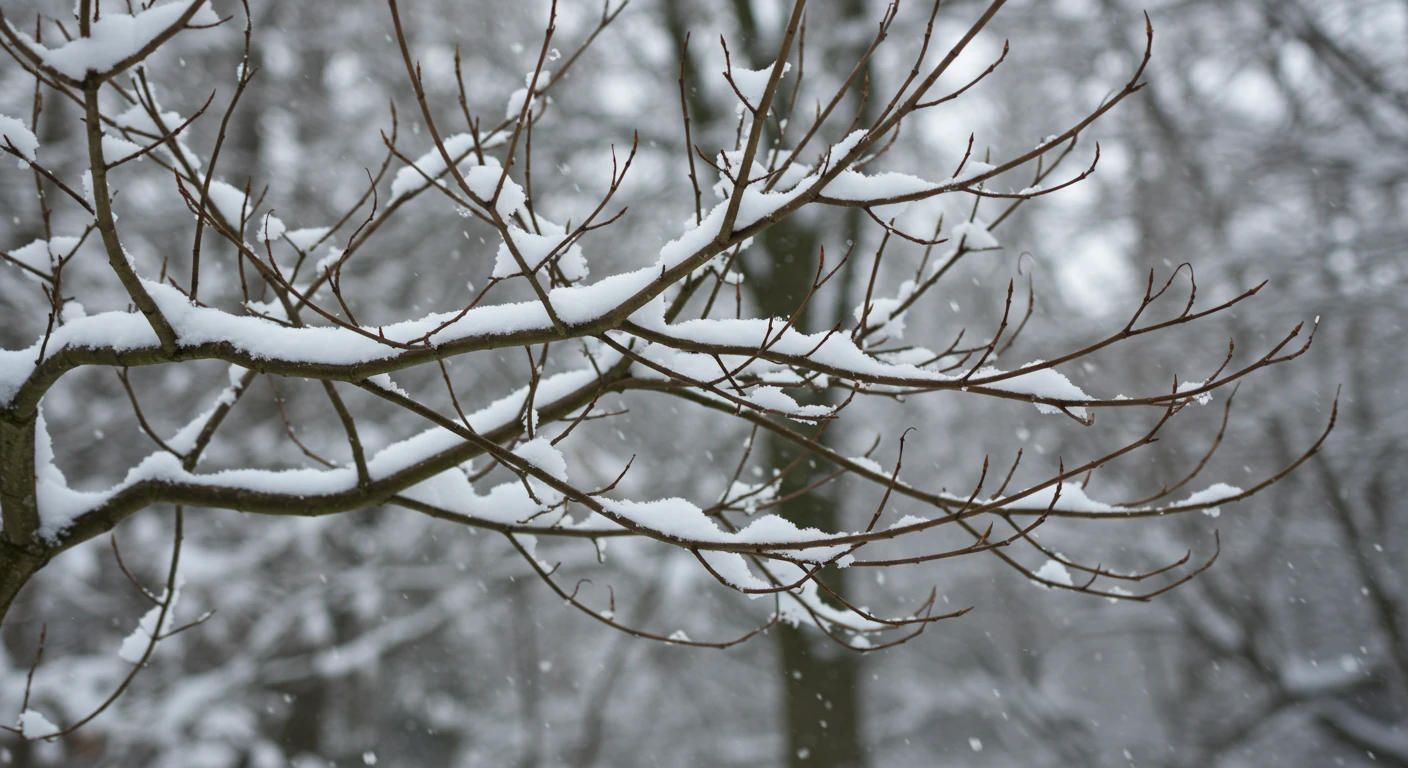
Hey there, Metcalfe neighbours! Winter around Ottawa can feel long, tempting us gardeners to just stay inside with hot chocolate, right? But take a peek outside – even under a blanket of snow, you can see the *structure* of your garden, its 'winter bones'. Believe it or not, this chilly dormant season is prime time for one of the most important landscaping tasks: winter pruning!
Trimming back shrubs and trees now, while they're sleeping, might seem odd (like tidying before the *real* party starts!), but it’s your secret weapon for a fantastic growing season. Proper pruning shapes your plants, removes dead or weak branches that could snap under our heavy snow, and actually encourages an explosion of healthy spring growth and more beautiful blooms later on. This foundational work supports everything from soil health (check out our tips on Soil Preparation) to the overall success of your Garden Maintenance routine.
Think of it as giving your plants a strategic haircut before they wake up. It's how we gardeners in Metcalfe, and nearby areas like Greely or Osgoode, can work *with* our sometimes-wild Ottawa climate, guiding our gardens toward becoming their best selves. Ready to learn how to wield those pruners effectively and set the stage for a stunning spring and summer display? Let's get started!
Why Bother Pruning in the Cold? The Perks for Your Ottawa Valley Garden
Okay, let's dive into why braving the Ottawa chill for a bit of pruning is actually a brilliant move for your garden's health and beauty!
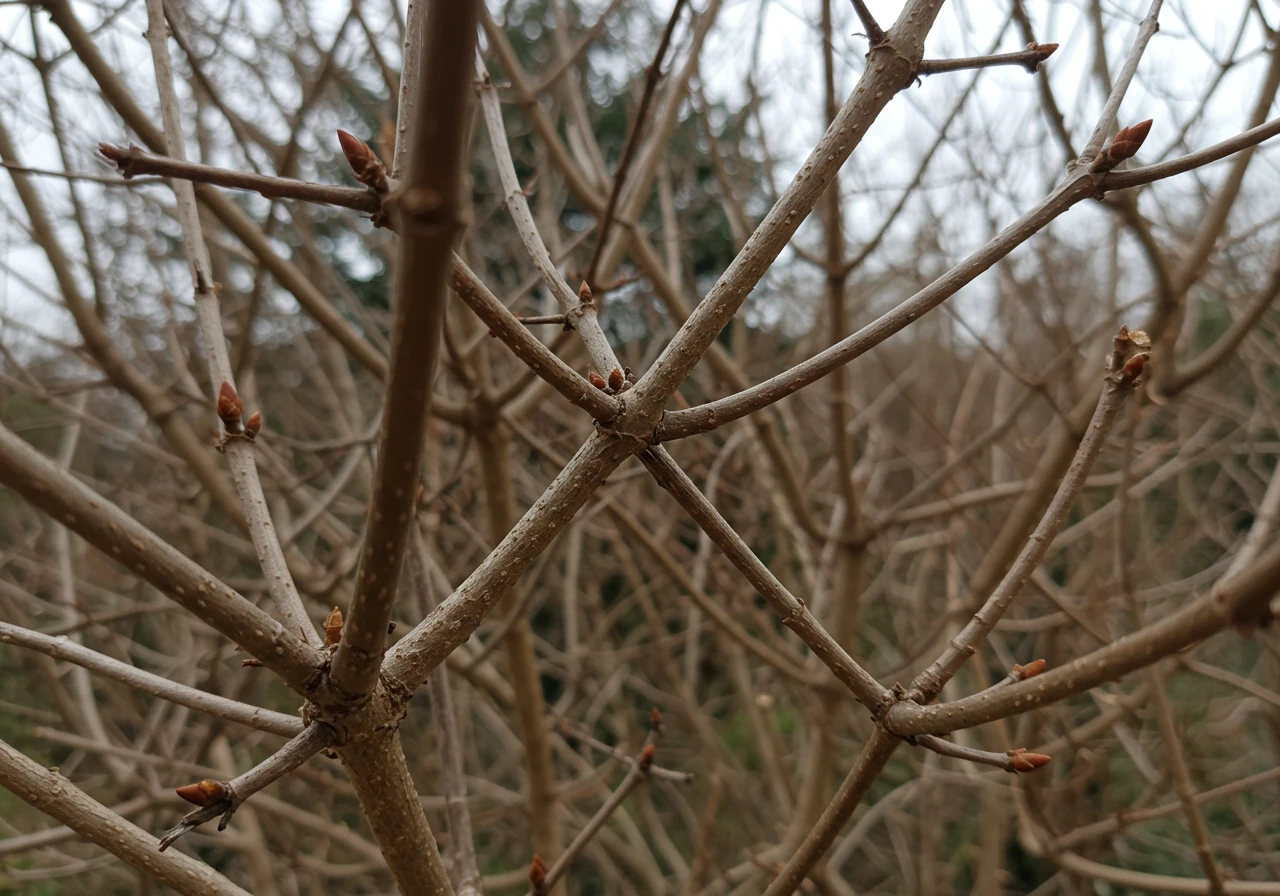
So, it's cold out. Like, *really* Ottawa Valley cold. The kind of cold that makes you question why you'd voluntarily leave your cozy spot by the fire to go mess with sticks. Fair enough! But hear us out: dormant pruning (that's fancy talk for trimming plants while they're "sleeping" in winter) offers some fantastic benefits, especially for us dealing with this climate. Think of it less as a chore and more as a strategic spa day for your shrubs and trees.
Here’s why bundling up and grabbing those pruners is worth it:
- Crystal Clear View: Without all those leaves in the way, you get an unobstructed look at the plant's structure – its "bones." It's way easier to spot problem areas like crossing branches rubbing together, awkward growth patterns, or deadwood that was hidden during the summer buzz. You can see exactly what needs to go for better shape and health.
- Less Shock, More Shine: Snipping branches when a plant is dormant is like getting a haircut while you're asleep (if only!). The plant is inactive, so it experiences far less stress than being cut during its active growing season. This means less energy wasted on healing and more power for that big spring growth spurt we all love.
- Disease & Pest Patrol Break: Most pesky insects and annoying plant diseases are taking a winter nap too. Pruning now means there's much less risk of spreading infections through the pruning cuts or attracting unwanted critters to fresh wounds. It’s a cleaner, safer time for plant surgery.
- Beating the Snow & Ice Blues: This is a big one for us here in the Ottawa area, whether you're in Richmond, Manotick, or anywhere that gets buried! Weak, dead, or poorly placed branches are prime candidates for snapping under heavy snow load or during ice storms. Removing them *before* winter truly unleashes its fury helps prevent damage to the plant and potentially your property. Imagine those established trees in older neighbourhoods like Manotick – preventative pruning is key! Dealing with the aftermath of snapped branches can be a hassle; sometimes larger debris removal even calls for specific help like a City Property Cleanup Service.
- Directing Spring Energy: Pruning tells the plant where to focus its energy come springtime. By removing unwanted growth, you encourage the plant to put its resources into developing stronger branches, more flowers, or better fruit on the parts you *want* to thrive. A well-pruned garden often leads to impressive Transformations.
- Tidier Task: Working on frozen or semi-frozen ground means less mud tracked around and less soil compaction around your plant's roots compared to squishing around in wet spring soil. Plus, the branches are often brittle and easier to snap or cut. It ties nicely into getting your garden space organized, much like thinking ahead with Fall Cleanup Services to Get Your Metcalfe Yard Ready.
- Comfort Counts (Yes, Even in Winter!): Okay, "comfort" might be relative, but using the right gear makes a difference. Ensure your tools are sharp and consider options that are easier on your hands and back, especially when it's cold. Investing in good gear, like those discussed in Metcalfe Ergonomic Gardening Tools to Prevent Strain, makes winter pruning less of a pain. Remember our Privacy Policy regarding any information you share if purchasing tools through affiliate links (Note: no affiliate links are present here, this is just an example insertion point).
Winter pruning is just one part of preparing your garden for the cold. It works hand-in-hand with other measures like those found in these Metcalfe Fall Garden Frost Protection Tips. And after pruning, protecting the base of your plants is still important; remember the value of insulation detailed in Metcalfe Mulch Magic: Expert Installation Tips, a key aspect of our Mulching and Edging services.
It might seem counterintuitive, but this cold-weather landscaping task sets the stage for a healthier, more beautiful, and safer garden when spring finally arrives. If tackling the pruning yourself feels overwhelming, remember there are always professional Landscaping Services available to help give your plants the expert care they need.
Pruning Approaches Compared
- Thinning Cuts
- Heading Cuts
- Rejuvenation
Thinning Cuts
This involves removing an entire branch back to its point of origin (main stem, larger branch, or ground). It's excellent for:
- Opening up the plant canopy for better light and air circulation.
- Reducing overall size without drastically changing the natural shape.
- Removing weak, crossing, or poorly positioned branches.
- Generally the preferred method for maintaining shrubs and trees.
This technique is often used in our regular City Garden Maintenance Service.
Heading Cuts
This means cutting a branch back to a bud or an intermediate point, not its origin. Use this more sparingly for:
- Encouraging bushier growth below the cut (can lead to density).
- Shaping formal hedges.
- Directing growth in a specific direction by cutting above an appropriately positioned bud.
- Overuse can lead to a 'witch's broom' effect or weak, dense growth.
Careful heading cuts are part of skilled Ottawa Garden Clean Up Service when reshaping is needed.
Rejuvenation Pruning
This is a drastic measure for overgrown, neglected shrubs that respond well to hard pruning (like some Spirea, Dogwood, Potentilla). It involves cutting most or all stems back close to the ground in late winter.
- Stimulates vigorous new growth from the base.
- Not suitable for all shrubs; research your specific plant first!
- May sacrifice blooms for one season but results in a 'renewed' shrub.
Think of it as a major reset, sometimes needed before starting fresh with services like Sod Installation nearby.
Timing is Everything: The Metcalfe Pruning Calendar (Kind Of)
Okay, let's talk timing. You know how they say timing is everything? Well, in gardening, especially with pruning, it’s *mostly* everything. We call this section the "Metcalfe Pruning Calendar (Kind Of)" because, let's be honest, predicting Ottawa weather is like predicting when your teenager will clean their room – tricky! But we can give you some solid guidelines.
Understanding Dormancy: Why Plants Need Their Beauty Sleep
First off, why late winter? It’s all about *dormancy*. Think of it as hibernation for your plants. When the days get shorter and the temperatures drop here in the Ottawa Valley, deciduous plants (the ones that lose their leaves) slow way down. They stop actively growing, store energy in their roots, and basically take a long winter nap. Pruning them during this sleepy phase is much less stressful for them, as we discussed earlier. They aren't trying to heal *and* push out new growth simultaneously.
The Sweet Spot: Late Winter Window in Metcalfe & Area
For most deciduous trees and shrubs (like hydrangeas that bloom on new wood, potentilla, dogwood, spirea, fruit trees), the ideal pruning window in our area – think Metcalfe, Greely, maybe out towards Vernon or Winchester – is typically late winter to very early spring. We're talking *roughly* mid-February through March, sometimes nudging into early April depending on the year. For specific climate data affecting timing, you might consult resources like Natural Resources Canada Plant Hardiness Zones map.
The goal is to prune *after* the absolute harshest, bone-chilling cold snaps are likely over (less risk of damage to the fresh cuts) but *before* the sap starts flowing vigorously and the buds begin to swell significantly. Pruning when the ground is still frozen or partially frozen is often easier – less mud! Plus, good pruning now complements future efforts like proper Soil Preparation for spring planting, ensuring your plants have healthy roots to support that new growth. If you've inherited a garden mess or the pruning job generates significant debris, especially near property lines, sometimes larger scale help like a City Property Cleanup Service might even be necessary for the really big jobs. We ensure responsible cleanup as part of our commitment, viewable in our Terms and Conditions.
Hold Your Horses! Plants NOT to Prune in Winter
Now, here's the crucial "Kind Of" part. *Do NOT* give a winter haircut to shrubs that bloom in the spring on *last year's growth* (often called "old wood"). Why? Because you'll be cutting off this spring's flower buds! Wait until *after* they finish blooming to prune these guys.
Examples of spring-bloomers to leave alone in winter include:
- Lilacs
- Forsythia
- Weigela
- Mock Orange
- Beautybush
- Some types of Hydrangeas (like Oakleaf or Bigleaf varieties - check your specific type!)
Also, avoid heavy pruning on trees known for "bleeding" sap excessively in late winter/early spring, like Maples and Birches. While light trimming is usually okay, major work is often better left for summer or fall for these specific trees. Evergreens generally have different pruning needs and timing too – usually light shaping in late spring or early summer is best.
Beyond Winter Pruning
Remember, pruning isn't just a winter task. Spring bloomers get pruned after flowering. Summer is for light shaping, controlling suckers, and trimming hedges. Fall is generally just for removing dead or diseased wood before winter hits again. It's a year-round thought process! Proper pruning might even reveal gaps where you envision new features, perhaps inspiring a future Garden Install project.
After your pruning work, tidying up the clippings and fallen leaves is essential. A thorough cleanup sets the stage for a healthy growing season. For comprehensive help getting your beds neat and tidy after pruning, consider looking into an Ottawa Garden Clean Up Service or, specifically for local residents, a Metcalfe Garden Clean Up Service. Residents nearby can also explore options like the Marionville Garden Clean Up Service.
Gearing Up: Tools, Techniques, and Staying Safe
Okay, let's talk shop! Or rather, shed. Before you start snipping away like a horticultural Edward Scissorhands, you need the right gear and know-how. It makes the job easier, better for your plants, and keeps *you* safe.
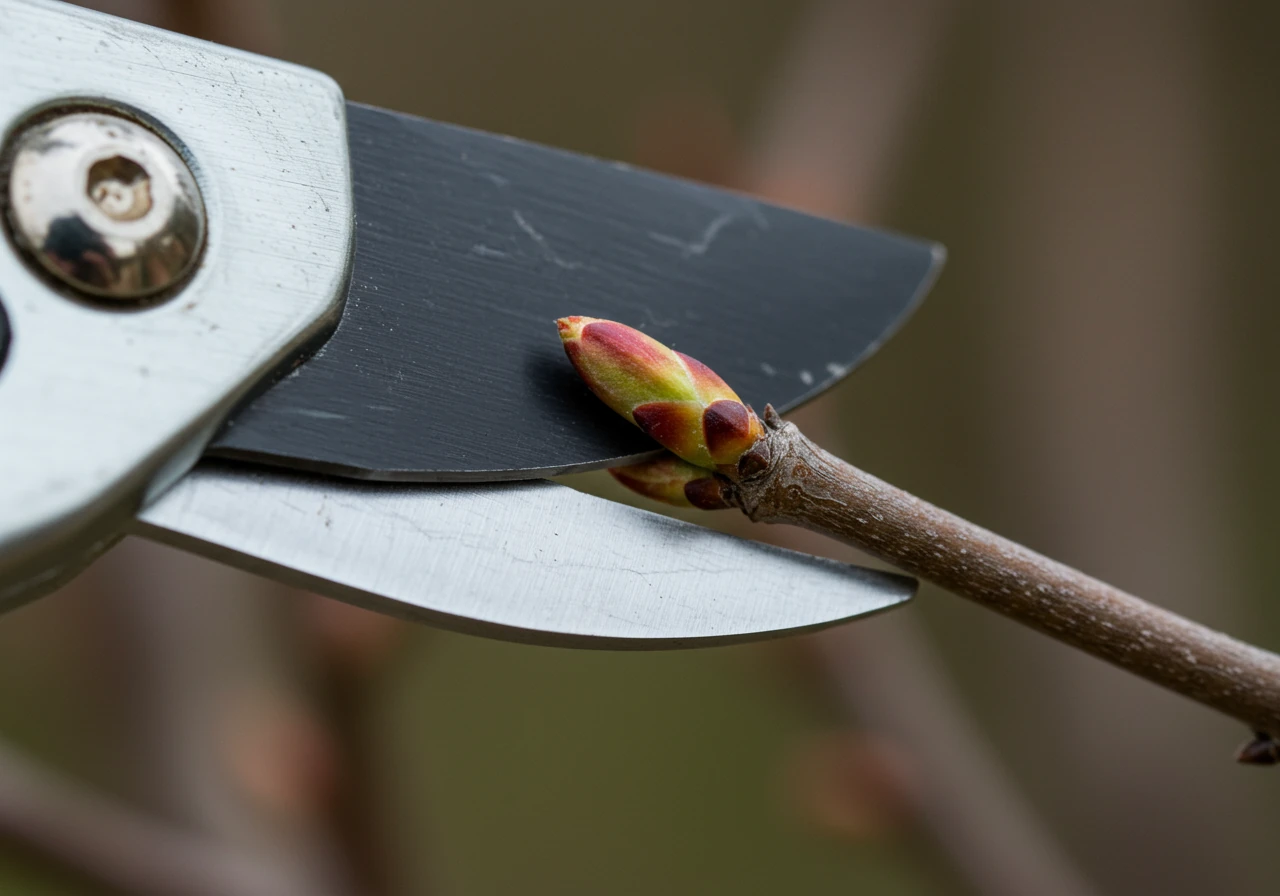
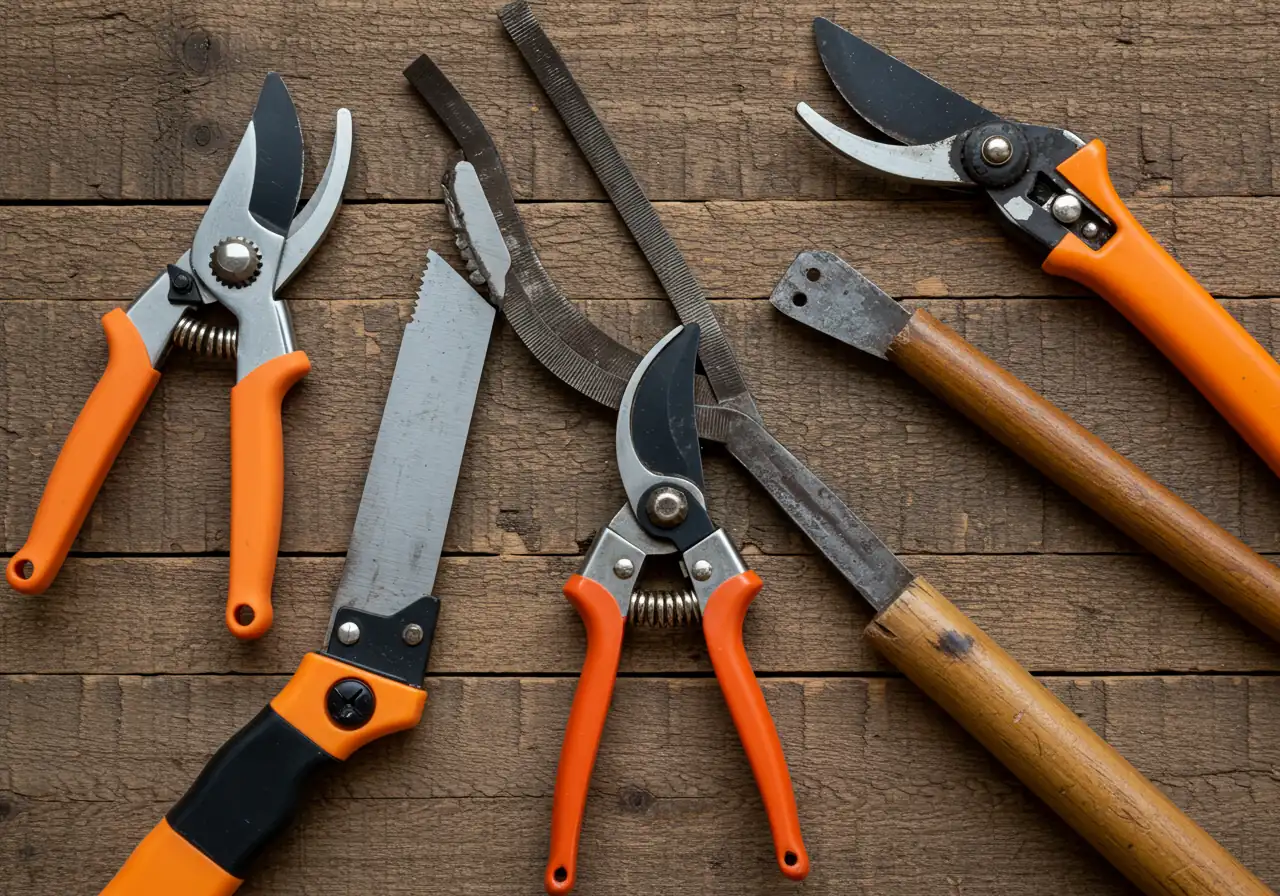
Gearing Up: Tools, Techniques, and Staying Safe
Think of your pruning tools like a chef's knives – having the right one for the job, keeping it sharp, and handling it safely makes all the difference. Here’s what you'll likely need:
- Hand Pruners (Secateurs): Your go-to for smaller branches, typically up to ¾ inch thick. Bypass pruners (where blades sweep past each other like scissors) make cleaner cuts than anvil types (one blade crushes against a flat surface). Keep 'em sharp! Dull blades tear, inviting disease.
- Loppers: Like long-handled pruners, giving you more leverage for branches up to 1.5 or 2 inches thick. Great for reaching into shrubs or tackling slightly bigger stuff.
- Pruning Saw: For branches too beefy for loppers. A curved blade often works well for getting into tight spots.
Keep 'Em Clean & Keen: Seriously, clean your tools after use, especially if you've cut diseased wood. A quick wipe with rubbing alcohol helps prevent spreading problems. And sharp tools? Non-negotiable. They cut cleanly, heal faster, and require less muscle from you. If sharpening isn't your thing, look into local services or learn online – it's easier than you think! Choosing quality tools from the start is part of good Material Selection for long-term gardening success.
Safety First, Folks! (No, Really)
Gardening injuries are more common than you'd think. Protect yourself:
- Gloves: Protects against thorns, blisters, and general grime.
- Eye Protection: Sunglasses are okay, safety glasses are better. You do *not* want a twig poking your eye. Trust us. Check Ottawa Public Health for general safety tips.
- Sturdy Footwear: Avoid slips and trips.
- Ladder Smarts: If you need a ladder for taller trees, especially common in established areas like Barrhaven or Kars, make sure it's stable. Have someone spot you if possible. Never overreach – move the ladder! For really high or tricky jobs, calling professionals is the safest bet.
Basic Moves: Thinning vs. Heading Cuts
There are two main types of pruning cuts:
- Thinning: Removing an entire branch back to its point of origin (like the main trunk, another branch, or the ground). This opens up the plant, improves air circulation, and reduces overall size without drastically changing the natural shape. It’s usually the preferred method.
- Heading: Cutting a branch back to a bud or a shorter stub. This encourages bushy growth *below* the cut. Use this sparingly, mainly for shaping hedges or redirecting growth. Overdoing it can lead to a tangled mess.
Making the Cut (The Right Way)
Here’s the lowdown on making a good cut on smaller stems:
- Identify: Find the bud facing the direction you want new growth to go.
- Angle: Position your sharp pruners at about a 45-degree angle, sloping *away* from the bud.
- Placement: Make the cut about ¼ inch above the bud. Too close can damage the bud; too far leaves an ugly stub that can die back and invite problems.
- Clean Cut: Snip cleanly in one go. No ragged edges!
For larger branches, look for the "branch collar" (the slightly swollen ridge where the branch joins the trunk). Cut just *outside* this collar, not flush with the trunk, and avoid leaving a long stub.
Dealing with the Debris
Okay, you've done the hard work, now what about the mountain of branches? The City of Ottawa has guidelines for yard waste. Smaller twigs can go in your green bin. Larger branches often need to be bundled (check the City's specific size/weight limits). For bigger jobs, or if you just don't want the hassle, consider a professional cleanup. Companies offering an Ottawa Yard Cleanup Service can handle the removal efficiently. If you're out in the countryside, perhaps near Marionville, specialized services like a Marionville Garden Clean Up Service know the local disposal options. Similarly, folks closer to Metcalfe can look into a dedicated Metcalf Yard Cleanup Service. And for truly massive amounts of debris, sometimes larger solutions like a City Yard Cleanup Service are required.
Pruning might seem daunting at first, but with the right tools, techniques, and safety mindset, you'll be shaping up your garden like a pro. If you hit a snag or have questions about a specific plant, don't hesitate to Contact Us – we’re always happy to chat about plants! You can also check out our reviews on our Google My Business page.
Conceptual: Pruning Impact on Shrub Vigor
*Conceptual chart showing potential increase in new growth/flowering vigor based on pruning intensity.
Who Gets the Chop? Winter Pruning Targets in Your Ottawa Garden
Okay, so we know *why* and *when* to prune in the Ottawa winter chill, but the million-dollar question is: *what* exactly gets the snip? Not every plant welcomes a winter haircut! Let's break down the usual suspects in your garden, whether you're tending a newer landscape in Barrhaven or maintaining established greenery in older parts of Nepean.
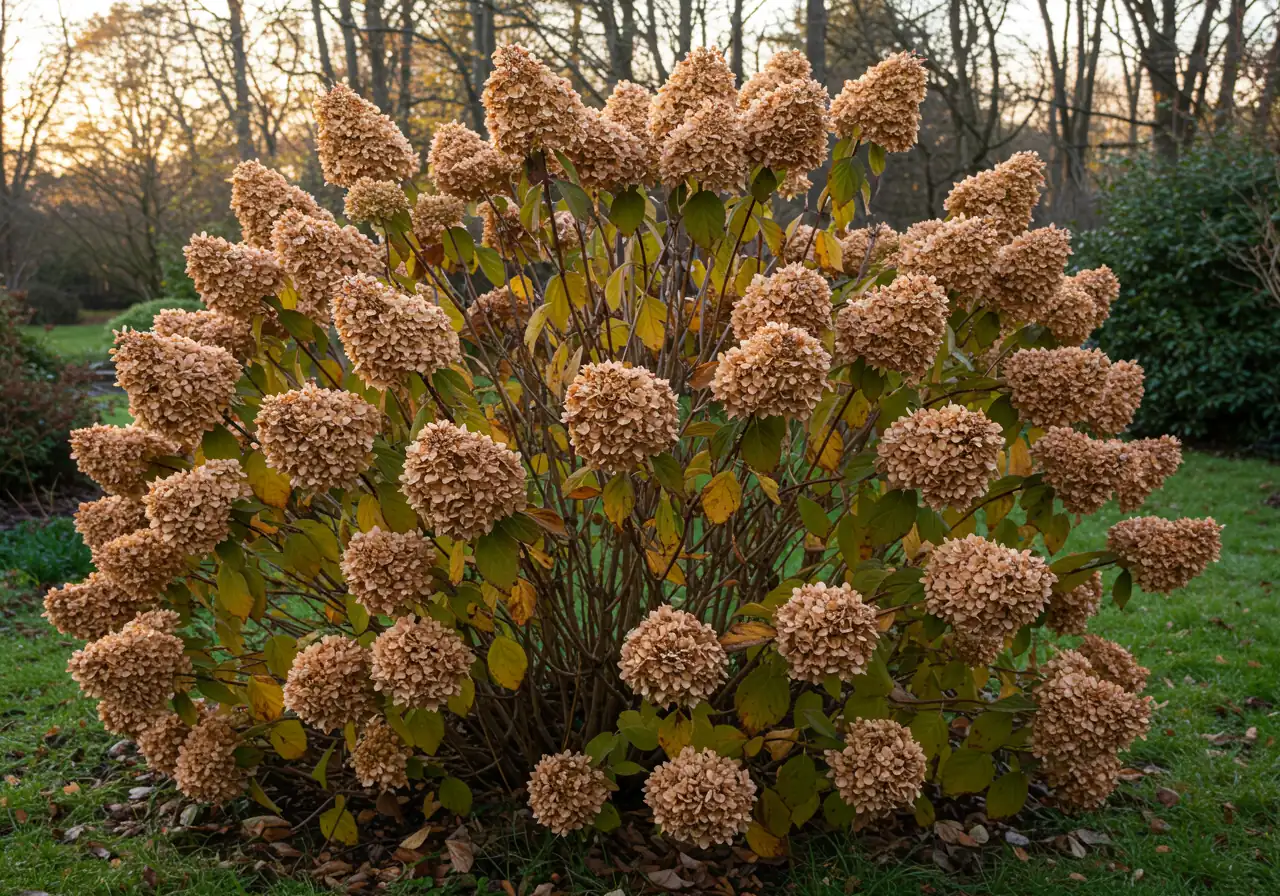
Who Gets the Chop? Winter Pruning Targets in Your Ottawa Garden
Think of winter pruning as playing favourites – you're focusing on plants that will truly benefit from a trim *before* they wake up. Here’s a rundown:
1. Deciduous Shrubs (The Leaf-Droppers):
Many common garden shrubs that bloom later in the summer, on the *new growth* they produce in spring, are prime candidates for winter pruning. This encourages vigorous new stems, which means more flowers!
- Targets: Summer-blooming Spirea, Potentilla, Dogwood (especially the colourful-stemmed varieties like Red Osier – cutting older stems encourages vibrant new ones), Hydrangeas that bloom on new wood (like Smooth Hydrangea 'Annabelle' or Panicle Hydrangeas 'Limelight', 'Pinky Winky'), Rose of Sharon.
- The Goal: Remove the "3 D's" first: *Dead, Diseased, and Damaged* branches. Then, thin out some of the oldest, thickest canes right down to the base to open up the plant and encourage new shoots. You can also shorten remaining stems to shape the shrub and control its size. Don't be shy with those Panicle Hydrangeas; they respond well to being cut back significantly. For very old, overgrown shrubs, perhaps like some you might find in established Manotick gardens, a harder "rejuvenation pruning" (cutting almost everything back close to the ground) can sometimes work wonders, though it's drastic.
2. Deciduous Trees (Most Shade & Ornamental Trees):
Late winter is ideal for structural pruning on young trees and maintenance on mature ones.
- Targets: Maple (though watch for heavy sap flow – light trimming is okay, major work might wait), Oak, Linden, Ash (if healthy), ornamental Crabapples, Hawthorns, etc. *Not* usually Birch or Walnut due to excessive bleeding – wait until summer for major work on those. Consult resources like the Land Information Ontario map gallery for tree species common in specific areas if unsure.
- The Goal (Young Trees): Focus on establishing a good structure. Remove crossing or rubbing branches, select strong main scaffold branches, and remove competing leaders (aim for one dominant central trunk). This early shaping prevents problems later.
- The Goal (Mature Trees): Primarily maintenance. Remove dead, diseased, or broken branches. Thin out crowded areas to improve light penetration and air circulation. Remove suckers growing from the base or watersprouts (vigorous vertical shoots) on branches. Working on larger trees often generates significant debris; managing this might require dedicated help, like a reliable Metcalf Yard Cleanup Service if you're in that area.
3. Fruit Trees (Apples, Pears):
These definitely benefit from annual winter pruning for good fruit production.
- The Goal: Remove the 3 D's. Thin out branches to allow sunlight to reach ripening fruit (an open, vase-like shape is often good for apples and pears). Remove watersprouts and suckers. Shorten some of last year's growth to encourage fruiting spurs. Proper pruning is key to a good harvest! If you're unsure about the specific cuts needed for fruit production, getting advice can be helpful. Learn more About Us and our approach to skilled plant care.
4. A Quick Note on Evergreens:
Most conifers (Pine, Spruce, Fir) and broadleaf evergreens (Rhododendrons, Boxwood) generally *don't* get major pruning in winter. Removing dead or damaged branches is okay anytime. Major shaping is typically done in late spring or early summer. Hedges like Cedar might get a light trim now if needed, but heavy shearing waits until growth starts.
What Stays Put?
Remember, leave those spring-blooming beauties alone for now! Lilacs, Forsythia, Weigela, Mock Orange – prune these *after* they flower, or you'll chop off this spring's show.
Pruning can create quite a pile of branches. Once you're done shaping your plants, a thorough cleanup is essential. For larger scale jobs impacting the whole yard, especially out near Russell or other parts of rural Ottawa, you might consider a Metcalf Property Cleanup Service to handle the hauling. After the cleanup, giving your garden beds a fresh look with professional Mulching and Edging can really make the pruned plants pop and protect their roots. Remember, safe pruning practices are key, especially when dealing with larger plants or ladders. If hiring help, ensure they operate safely and professionally (you can see our commitment to clear expectations in our Terms and Conditions).
Focus on these target groups, prioritize removing the bad stuff, and you'll set your Ottawa garden up for a fantastic growing season!
Pro Tips for Ottawa Pruners: Quick Wins & Key Insights
Key Insights for Success:
- Target the "3 D's" First: Always start your pruning mission by removing any wood that is clearly *Dead, Diseased, or Damaged*. This immediately improves plant health and makes it easier to see the structure for further shaping. Simple, effective, and oh-so-satisfying!
- Timing is Key (Especially for Flowers!): Remember, late winter (think Feb/March here) is prime time for shrubs that bloom on *new* wood (like many Spireas, Potentillas). BUT hold off on spring bloomers like Lilacs until *after* they flower, or you'll snip off the show! Getting this wrong is like investing in top-notch Lawn Care but forgetting to mow – you miss the best part!
- Sharp & Clean Tools Rule: Seriously, keep those pruners sharp and clean them between plants if you suspect disease. Sharp blades make clean cuts that heal faster, preventing problems. Dull tools tear stems and make *you* work harder. It’s a fundamental step for good landscaping.
- Cut with Confidence (and Direction): When shortening branches, cut about ¼ inch above a bud that faces *outward*, guiding new growth away from the center. For removing larger limbs, cut just outside the slightly raised "branch collar," not flush with the trunk. These little details lead to big Garden Transformations over the seasons.
- Plan for the Pile-Up: Pruning creates debris – sometimes a lot! Know Ottawa's green bin rules for smaller stuff. For bigger branch piles, especially after tackling large shrubs in areas like Manotick, consider arranging for removal. A thorough tidy-up, maybe even using a City Garden Clean Up Service or a more localized option like a Marionville Yard Cleanup Service if you're further out, leaves your space neat and ready for spring. A clear area might even inspire thoughts of new projects, like fresh Sod Installation where an old, overgrown shrub used to be!
Simplified Winter Pruning Workflow
Step 1: Assess & Plan
Identify target plants. Check timing (late winter for most, wait for spring bloomers). Observe structure and decide goals (shape, health, size).
Step 2: Gather & Sharpen Tools
Collect sharp bypass pruners, loppers, and possibly a saw. Ensure they are clean. Put on gloves and eye protection.
Step 3: Remove the 3 D's
Start by cutting out all Dead, Diseased, and Damaged branches back to healthy wood or their origin.
Step 4: Thin & Shape
Remove crossing/rubbing branches. Thin out oldest canes on shrubs if needed. Make shaping cuts above outward-facing buds.
Step 5: Clean Up
Gather all pruned branches. Dispose of according to local regulations (green bin, bundling, or arrange for Yard Cleanup Service).
Metcalfe Winter Pruning FAQs: Your Questions Answered
That's a great question! Pruning during dormancy (late winter, think February/March) is actually *less* stressful for most deciduous plants. They aren't actively growing, so they don't 'feel' the cut as much. The key is to avoid pruning during those brutal deep freezes (like -25°C snaps!). Waiting until the absolute worst of the cold has likely passed, but before major sap flow starts, is ideal. This timing helps prevent winter damage to the fresh cuts, especially important in areas like Kars or Osgoode where winds can be fierce.
Ah, the pruning aftermath! For smaller twigs and branches, Ottawa's green bin program is your friend (check their size limits!). Larger branches often need bundling. If the pile is looking more like a beaver dam than a weekend task, especially after tackling some big, old lilacs, you might consider professional help. There are services dedicated to yard waste, ranging from general Property Clean Up assistance to more comprehensive options like an Ottawa Property Cleanup Service. Getting rid of the debris promptly keeps things tidy and avoids annoying neighbours (just kidding... mostly!).
It depends! Hydrangeas are tricky. If you have 'Annabelle' types (Hydrangea arborescens) or Panicle Hydrangeas like 'Limelight' or 'Pinky Winky' (Hydrangea paniculata), then yes! These bloom on new wood, so winter pruning encourages great blooms. Go for it! However, if you have Bigleaf Hydrangeas (Hydrangea macrophylla, the ones with pink or blue pom-poms) or Oakleaf Hydrangeas, *don't* prune them in winter. They bloom on old wood, so you'd be cutting off this summer's flowers. Wait until after they bloom to shape them.
Timing can feel like trying to predict potholes on rural roads near Embrun! Pruning *too* early, during extreme cold, risks damaging the fresh cuts and the plant tissue around them. Pruning *too* late, when the sap is really flowing and buds are swelling significantly, can stress the plant as it's trying to push out growth, potentially leading to weaker growth or 'bleeding' sap (especially on maples). Aim for that late winter sweet spot – usually mid-Feb to late March around here.
Absolutely! If you're feeling unsure, especially with valuable trees or shrubs, calling in a professional is a wise choice. They have the experience, proper tools, and knowledge of local conditions. Getting an estimate is easy, and discussing the job beforehand ensures you're comfortable. You can even provide input after receiving a quote – good companies value your opinion and welcome Estimate Feedback. Knowing your plants are in good hands brings peace of mind, and we're always happy to help – just reach out and say hello, maybe via our Thank You page link for easy contact. For those in more rural settings needing extensive work, sometimes specialized services like a Marionville Property Cleanup Service are available for the broader task scope.
Conclusion: Pruning Your Way to a Beautiful Metcalfe Spring
Whew! We've covered a lot, from why braving the Ottawa chill is worth it, to the best timing (that tricky late winter window!), the right tools, and *which* plants actually appreciate a winter haircut. Remember, winter pruning isn't just busywork; it's a strategic move in your landscaping game. It sets the stage for healthier growth, more stunning blooms, and safer trees and shrubs, especially when facing our sometimes-wild Metcalfe weather. Think of it as your secret weapon for coaxing out the best possible spring show!
By focusing on removing the "3 D's" (dead, diseased, damaged), understanding which shrubs bloom on new versus old wood, and using clean, sharp tools, you’re well on your way. It might seem like just trimming sticks now, but come spring, when your garden bursts with vigour, you'll be glad you put in the effort.
Feeling ready to tackle those branches? Fantastic! But if wielding loppers in the cold sounds less appealing than a root canal, or if you're unsure about tackling that big old maple, don't sweat it. We're here to help! Whether you're in Metcalfe, Greely, Osgoode, or nearby communities, our team can handle the pruning, cleanup, and all your landscaping needs. Let us take the guesswork out of it so you can simply look forward to enjoying a truly beautiful Metcalfe spring.
Ready for professional pruning or have other landscaping questions? Give us a call or visit our website today to get started!
Contact Clean Yards Now
